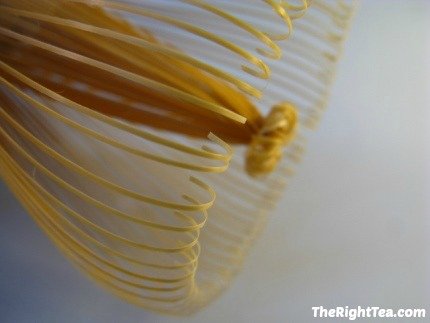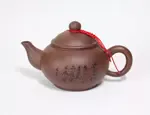Matcha Tea
-
Powdered Japanese Green Tea
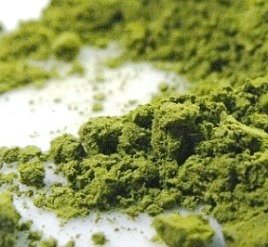
Why is Matcha so different from other green teas?
Ground to a fine powder, matcha is made from the best Japanese green tea leaves.
The resulting bright green powder makes a unique dense and perfumed cup of tea. Unlike other loose leaf teas, powdered matcha is not infused but whisked to make the perfect cup of green tea.
Let’s have a cup of tea and enjoy the pleasures of an ancient art of making tea.
What is Matcha?
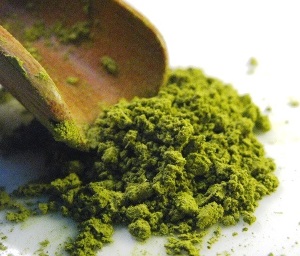
So even though today Matcha is considered a Japanese green tea, it was actually created in China, during the Song Dynasty (960 - 1270AD).
In 1191AD, a Japanese monk by the name of Esai brought this powdered tea to Japan.
It was a tea preferred in the rituals of the Zen Buddhist monks and in the 14th through 16th centuries in the higher classes of Japanese society.
While China would later move on to the infused tea, in Japan the brewing and drinking of powdered tea led to the creation of a ceremonial ritual that surrounds the art of making and enjoying a cup of Matcha tea.
This ceremony is called Cha No Yu surrounded by numerous rituals and etiquette. It was created in the 17th century and is still alive today.
To better understand how tea leaves turn into matcha powder let’s have a look at this particular art of processing tea.
Processing Matcha Tea
What type of tea leaves are made into Matcha?
- To make Matcha only the best green tea leaves are chosen, so that you get a bright green powder. In the case of Imperial Matcha, Gyokuro leaves are used.
- Gyokuro is considered the finest and best of all Japanese teas. Learn more about is here.
Growing
- The perfect green tea leaves that make up the Matcha tea powder are grown in Japan, in the town of Uji.
- This region has the ideal conditions to create this tea: a foggy climate, limiting the amount of sunlight that falls on the tea leaves and different temperatures for 24 hours help them to grow gently.
Harvesting
- A few weeks before harvest, the tea leaves are covered with bamboo mats and grown under shade, thus increasing their chlorophyll content. This step ensures the sweetness of the tea.
- The leaves, the very finest buds, are plucked once a year in the spring by hand, making this a unique and rare type of tea.
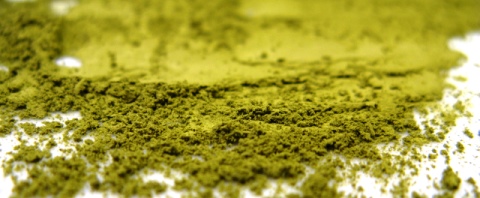
Processing and Grinding
- Once harvested the leaves are steamed, dried but instead of being rolled, their veins are removed.
- Finally the delicate leaves are stone ground into a fine Matcha powder until they reach the desired texture.
The resulting tea is a powerful concentrated tea, but before making a cup of Matcha powdered tea and find out what green tea health benefits this powdered tea has to offer you.
Matcha Tea Benefits
When compared to other green teas, Matcha contains much higher nutritional value for your health and this has to do with the way you ingest your tea.
With an infused tea, you only drink the infused water, but with Matcha powder as the base of this tea, you are actually ingesting the green tea leaves themselves.
So let’s take a look at the many tea benefits Matcha has to offer you.
Weight Loss Tea
- Green tea can be an important ally when you are trying to lose weight. It can be your beverage of choice everyday along with a healthy diet and physical exercise.
- Here is where you really experience the added benefits of drinking Matcha powder tea and not just another infused tea. Matcha is said to contain much higher amounts of catechin than other green teas and really boosting your metabolism.
- For some, losing weight or even just getting rid of fat in your organism may not be just be about eating less, you may really need help to get your body to metabolize the fat that is already in there.
Detox Tea
- Sometimes it may be more than fat that is slowing you down. Toxins, bacteria and wastes in your body may be keeping your body from running smoothly to its full potential.
- You may be in the need of a good body cleanse and Matcha tea may help you with the detoxification process.
- Full of antioxidants, this Japanese green tea builds defenses against bacteria and viruses. Additionally, as tea leaves are grown in the shade, they contain a higher amount of chlorophyll which in turn helps your liver to get rid of toxins.
Disease and Cancer Prevention
- Matcha leaves contain up to 60% of catechins, marvelous antioxidants, which protect your cells from damage to DNA that may cause degeneration and cancer. Antioxidants also inhibit the development of tumors. So give this tea a try.
- With every sip you take you absorb a high amount of minerals, nutrients and vitamins that help prevent several diseases caused by viruses or bacteria.
- Drinking green tea daily, such as Matcha, will also help lower the risk of heart disease and stroke. By increasing your metabolism, you will be reducing bad cholesterol levels and regulate blood sugar levels.
Healthy Stimulant
- Like all green teas, Matcha contains caffeine, but very moderate when compared to coffee (approximately 1/3 of the caffeine in a cup of coffee).
- This tea is a healthier stimulant than beverages like coffee because whereas caffeine in coffee is released immediately once drunk, the caffeine in teas like Matcha is slowly absorbed into the bloodstream with a longer lasting effect.
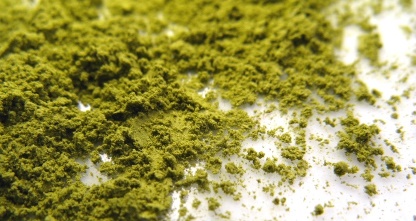
Calming Tea
- Can tea be stimulating and calming at the same time? Yes, it is possible. Teas, such as Matcha tea, contain L-Theanine, an amino acid that relaxes the mind and so gives you a perfect balance between energy and relaxation throughout the day.
- This is why Matcha is immensely cherished among Buddhist monks – it assists them in meditation. A peaceful, clean and aware mind, how great is that?
Other important health benefits of Matcha Tea:
- Matcha tea antioxidants help slow down the aging process, so you will look younger, feel fresher and your skin will happily thank you.
- The compounds in this tea help protect against ulcers, viral and bacterial infections and osteoporosis.
Try Matcha Green Tea Today!
Matcha Varieties - Koicha and Usucha
Depending on the age of the tea leaves, two premium varieties of Matcha tea may be created - Koicha and Usucha, also known as thick and thin tea. They are considered premium grade Matcha green teas and are prepared differently.
-
Koicha (thick tea) is made from the leaves of tea plants that are at least 30 years old. It is a more expensive variety, but it surprises you with a sweeter fragrance and flavor.
To best taste Koicha, you should use more tea and less water to create a greenish tasteful creamy and thick mixture. - Usucha (thin tea) leaves come from plants that are less than 15 years old. It has a stronger flavor, so to prepare Usucha you will need more water and less tea.
The mousse jade beverage that is Koicha is usually preferred in the Japanese tea ceremony.
Drinking Matcha Tea
With the right utensils you too can create a bowl of Matcha and taste this Japanese powdered green tea. No teapots are needed for this tea.
Let’s learn how to make Matcha tea.
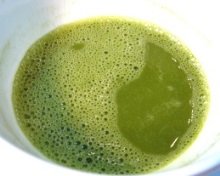
Quantity: 1-2scps/75ml or 3-4scps/40ml
Whisking: W or circular movements
Rebrew allowed: No
Milk: No
Sweetener: No
Best paired with: sweets, green tea sweets before drinking macha
Tea Ware
- To make a cup of good Matcha tea you will also need: a Matcha bowl – the chawan, a bamboo whisk with fine bristles – the chasen, a scoop – the chashaku, a tea cloth – the chakin, and a thermometer.
The Water
- The first step in the process is to preheat your matcha bowl to the right temperature. Pour water at a temperature of around 75ºC to 80ºC (approx. 167ºF to 176ºF).
- Use a thermometer to check the heat after a couple of minutes. What you will see is that once the hot water touches the cold bowl, the temperature of the water will immediately drop.
- So, if you need to in the winter, throw away the water and refill the bowl again to make sure it is hot enough to receive the powdered tea. Once properly heated, empty and dry the bowl.
- Note: Preserve about 70ml (~2.4oz) of the hot water if you are preparing Usucha and 40ml (~1.4oz) for Koicha.
The Tea
- With your bamboo scoop measure about 1 to 2 scoops of Matcha tea (~1.8-2g) for Usucha and 3 to 4 scoops (~3.8-4g) for Koicha. Place the powder inside the bowl.
- If you don’t have a scoop, then use a teaspoon instead. It is about half a teaspoon per scoop of matcha tea. If the Matcha powder feels lumpy, try sifting it to make the process easier.
Whisking
-
Pour the hot water into the matcha bowl and whisk.
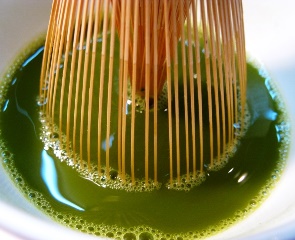
-
Quick tip: before pouring, get the thermometer and check the water temperature one more time.
Make sure it is still around 75ºC to 80ºC (approx. 167ºF to 176ºF). - Get your bamboo whisk and start whisking in quick W movements until you obtain a thick froth with several bubbles. If you don’t have a whisk, you may use a spoon, but it may be harder and using the whisk is great fun.
- If you want to obtain Koicha then whisk with circular stirring movements which will offer you a smoother mixture with no froth.
Drinking
- Drink it immediately, before it cools down or settles too much. Be prepared for a strong cup of tea, with a slight bitterness to it. To counter this bitterness, it is common to eat a small green tea sweet before drinking this tea.
- The best and higher grades of Matcha tea will have a sweeter flavor, while standard grades of Matcha will tend to be a bit coarser.
Storing your Tea
- To keep Matcha fresh, store it in your refrigerator in an airtight container and consume it within 2 to 4 weeks after opening.
Other uses for Matcha Tea
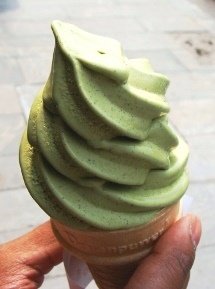
You can purchase lower grade Matcha usually labeled “cooking matcha” that is more suited for this purpose, rather than use the high quality Matcha that you drink.
From lattes and iced teas to cookies, sponge cakes, mochi and ice creams, Matcha powder is used in any way you can imagine both in the West as well as in the East.
Need to add a touch of green to your recipes? Put away the food coloring and try Matcha instead.
Matcha is sometimes also added to other types of tea for an extra layer of flavor. For example, you may find it in genmaicha, the Japanese green tea with roasted rice.
Check out these other recipes that use powdered green tea:
Buy Your Matcha Tea Today!
Click on the image or on the link below to purchase from Art of Tea your Matcha Tea Grade A.
Try this premium organic Grade A matcha offering a rich, layered flavor and a gentle energy boost. This is a fine powder that creates a smooth, creamy, and frothy finish when whisked.
Drink a cup of tea that is delicious with vegetable notes, full of healthy catechins.
Buy your Matcha Ceremonial Grade
Take part in this great ceremony and have a great cup of Japanese green tea. Enjoy the elegant ritual and experience an ancient royal practice.
Grow your tea drinking experience with Matcha!
Return from Matcha Tea to Types of Tea
Return to The Right Tea Homepage
”In the Taste of a single cup of tea you will eventually discover the truth of all the ten thousand forms in the universe.”
- Attributed to Kyongbong Sunim, Ch'an (Zen) Master

Do you have a question? Then feel free to Contact Us!
And don’t forget to follow us on Facebook to receive updates, photos and interesting tips and news! Follow us also on Pinterest!
Search Website:
Be healthy
with a wide
choice of herbs!

Prepare your tea!
Try these
Tea Samplers!

Wellness Pack at ArtofTea.com

Award Winning Pack ar ArtofTea.com
Find other
tea time items at ...







